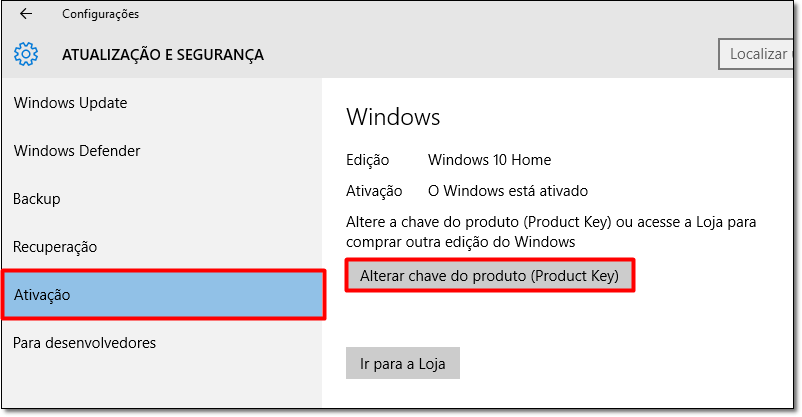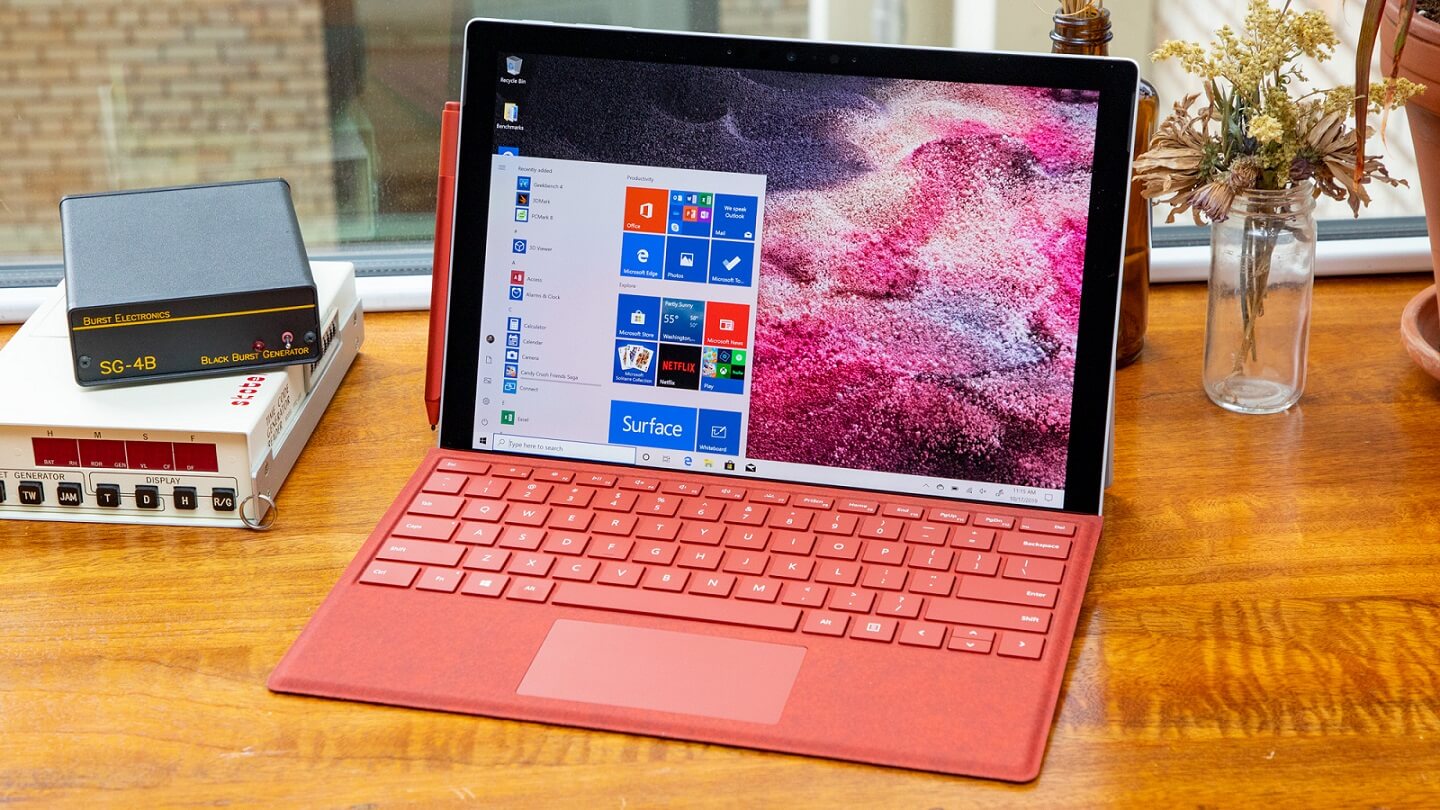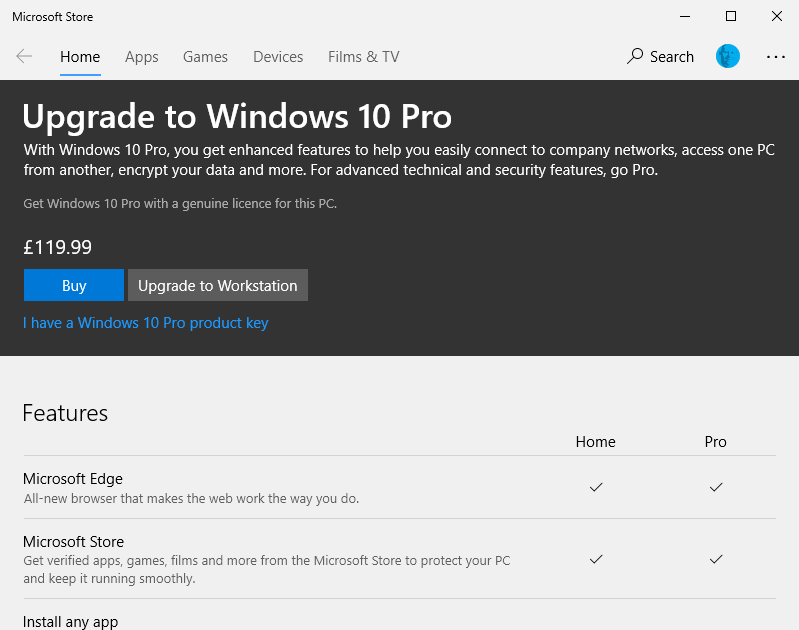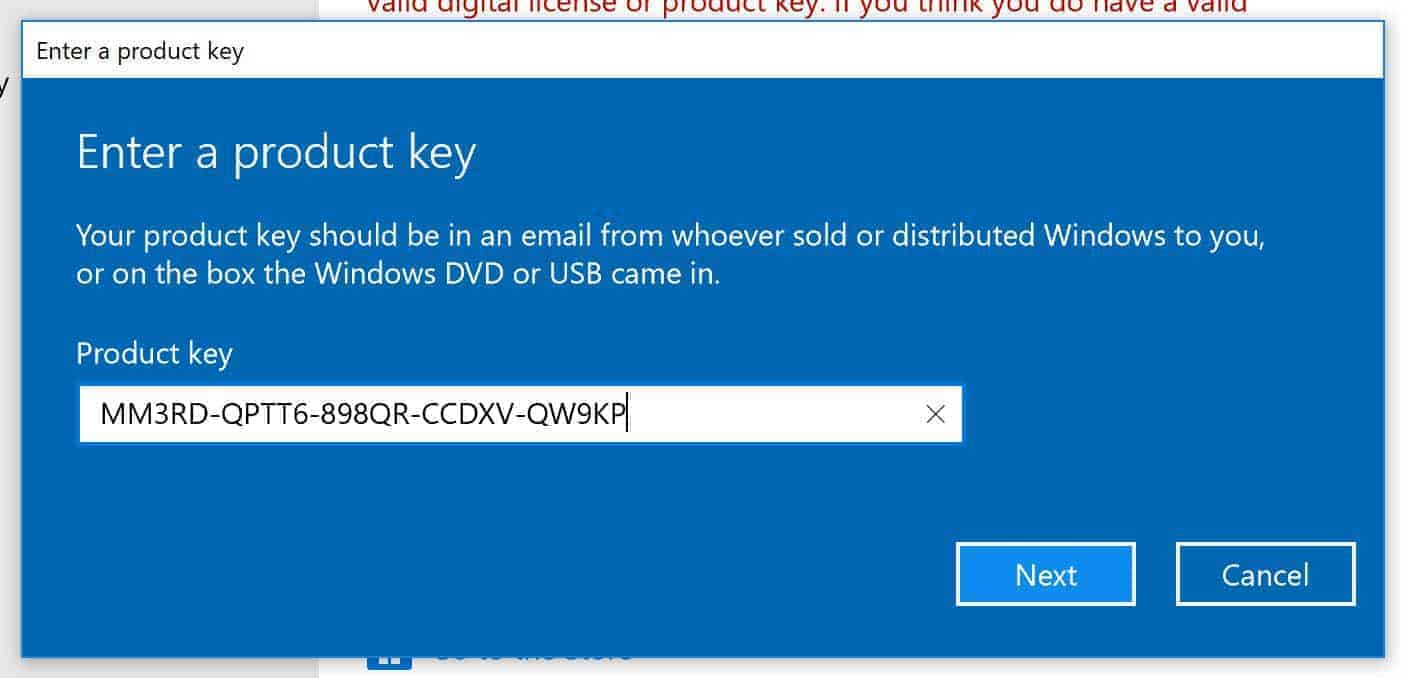Windows 10 Pro is a desktop edition for PCs, tablets and 2-in-1s. Building upon both the familiar and innovative features of Windows 10 Home, it has many extra features to meet the diverse needs of small businesses. Windows 10 Pro helps to effectively and efficiently manage their devices and apps, protect their sensitive business data, support remote and mobile productivity scenarios and take advantage of cloud technologies. Windows 10 Pro devices are a great choice for organizations supporting Choose Your Own Device programs and prosumer customers. Windows 10 Enterprise builds on Windows 10 Pro, adding advanced features designed to meet the demands of medium and large sized organizations.
It provides advanced capabilities to help protect against the ever-growing range of modern security threats targeted at devices, identities, applications and sensitive company information. Windows 10 Enterprise also supports the broadest range of options for operating system deployment and comprehensive device and app management. It will be available to our Volume Licensing customers, so they can take advantage of the latest innovation and security updates on an ongoing basis.
At the same time, they will be able to choose the pace at which they adopt new technology, including the option to use the new Windows Update for Business. With Windows 10, Enterprise customers will also have access to the Long Term Servicing Branch as a deployment option for their mission critical devices and environments. And as with prior versions of Windows, Active Software Assurance customers in Volume Licensing can upgrade to Windows 10 Enterprise as part of their existing Software Assurance benefits.
Before selecting a Windows 10 edition, the first step in any migration plan is an assessment of your IT environment. With Lakeside Software's SysTrack, you can quickly and accurately collect data on your users' PC environment to better inform your Windows 10 migration plan. This allows enterprises to determine the necessary costs and scheduling of the migration process.
Extended support until January 13, 2032The original release of Windows 10 receives mainstream support for five years after its original release, followed by five years of extended support, but this is subject to conditions. Microsoft stated that these devices would no longer receive feature updates, but would still receive security updates through January 2023. Microsoft will continue to support at least one standard Windows 10 release until October 14, 2025.
If your existing Windows 10 PC is running Windows 10 20H1 or later and meets the minimum hardware specificationsit will be able to upgrade to Windows 11. The upgrade rollout plan is still being finalized, but for most devices already in use today, we expect it to be ready sometime in early 2022. Not all Windows 10 PCs that are eligible to upgrade will be offered to upgrade at the same time. To see if your PC is eligible to upgrade, refer to our knowledge base for a list of tested systems. Once the upgrade rollout has started, you can check if it is ready for your device by going to Settings/Windows Updates. Similar to how end users are notified when updates are available in Windows 10, end users will see an indication in the notification areas of the taskbar in the bottom right, that the upgrade is available.
What Is Windows 10 Pro Upgrade More information on how that is presented will be available at a later date. Additional desktop notification options may be also be added at a later date. As of the May 2019 update, the minimum disk space requirement has been increased to 32 GB. In addition, on new installations, Windows permanently reserves up to 7 GB of disk space in order to ensure proper installation of future feature updates. This edition is designed for "special-purpose devices" that perform a fixed function . For this reason, it excludes Cortana, Microsoft Store, and all bundled Universal Windows Platform apps .
10 product keys, meaning they could be entered during installation to activate the free license, without the need to upgrade first to "activate" the hardware with Microsoft's activation servers. Windows 10 received generally positive reviews upon its original release. In March 2016, some users also alleged that their Windows 7 and 8.1 devices had automatically begun upgrading to Windows 10 without their consent. In June 2016, the GWX dialog's behavior changed to make closing the window imply a consent to a scheduled upgrade.
It was concluded that these users may have unknowingly clicked the "Accept" prompt without full knowledge that this would begin the upgrade. The upgrade offer was marketed and initiated using the "Get Windows 10" application, which was first downloaded and installed via Windows Update in March 2015. Third-party programs were also created to assist users in applying measures to disable GWX.
10 heavily emphasizes freemium services, and contains various advertising facilities. Some outlets have considered these to be a hidden "cost" of the free upgrade offer. 10 Home and Pro is "Semi-Annual Channel " (formerly "Current Branch", or "CB"), which receives stable builds after they are publicly released by Microsoft. Each build of Windows 10 is supported for 18 months after its original release. The OS restricts software installation to applications obtained from Microsoft Store; the device may be upgraded to Windows 10 Pro for a fee to enable unrestricted software installation.
As a time-limited promotion, Microsoft stated that this upgrade would be free on the Surface Laptop until March 31, 2018. Windows 10 S also contains a faster initial setup and login process, and allows devices to be provisioned using a USB drive with the Windows Intune for Education platform. The new Start menu takes after Windows 7's design by using only a portion of the screen and including a Windows 7-style application listing in the first column.
Myerson said that these changes would occur in a future update, but did not elaborate. Windows Phone 8.1 would share nearly 90% of the common Windows Runtime APIs with Windows 8.1 on PCs. Feature updates prior to version 1909 are distributed solely as an in-place upgrade installation, requiring the download of a complete operating system package (approximately 3.5 GB in size for 64-bit systems). Unlike previous builds, version 1909 is designed primarily as an update rollup version of 1903, focusing primarily on minor feature additions and enhancements. For upgrades to 1909 from 1903, a new delivery method is used where its changes were delivered as part of the monthly cumulative update, but are left in a dormant state until the 1909 update "enablement" patch is installed. The full upgrade process is still used for those using builds prior to 1903.
Windows 10 provides greater integration with the Xbox ecosystem. Windows 10 also allows users to control and play games from an Xbox One console over a local network. The Xbox Live SDK allows application developers to incorporate Xbox Live functionality into their apps, and future wireless Xbox One accessories, such as controllers, are supported on Windows with an adapter. A new iteration of the Start menu is used on the Windows 10 desktop, with a list of places and other options on the left side, and tiles representing applications on the right. The menu can be resized, and expanded into a full-screen display, which is the default option in Tablet mode.
A new virtual desktop system was added by a feature known as Task View, which displays all open windows and allows users to switch between them, or switch between multiple workspaces. Universal apps, which previously could be used only in full screen mode, can now be used in self-contained windows similarly to other programs. Program windows can now be snapped to quadrants of the screen by dragging them to the corner.
When a window is snapped to one side of the screen, Task View appears and the user is prompted to choose a second window to fill the unused side of the screen (called "Snap Assist"). Many would argue that downloading Windows without paying for or already owning a product key is ethically wrong. That said, Microsoft has made this process easier over various Windows iterations and lessened the limitations and nagging that happens when you don't activate. The company isn't trying to close this loophole, probably because it's more interested in driving user numbers. I've even seen well-known vendors and Microsoft partners do press presentations with watermarks on their desktop.
Windows 10 Mobile is designed to deliver the best user experience on smaller, mobile, touch-centric devices like smartphones and small tablets. It boasts the same, new universal Windows apps that are included in Windows 10 Home, as well as the new touch-optimized version of Office. Windows 10 Mobile offers great productivity, security and management capabilities for customers who use their personal devices at work. In addition, Windows 10 Mobile will enable some new devices to take advantage of Continuum for phone, so people can use their phone like a PC when connected to a larger screen. Other critics argued that Microsoft should not have triggered any downloading of Windows 10 installation files without user consent. Device Guard is designed to protect against zero-day exploits, and runs inside a hypervisor so that its operation remains separated from the operating system itself.
The Windows Runtime app ecosystem was revised into the Universal Windows Platform . These universal apps are made to run across multiple platforms and device classes, including smartphones, tablets, Xbox One consoles, and other devices compatible with Windows 10. Windows 10 Mobile Enterprise is designed to deliver the best customer experience to business customers on smartphones and small tablets. It offers the great productivity, security and mobile device management capabilities that Windows 10 Mobile provides, and adds flexible ways for businesses to manage updates. In addition, Windows 10 Mobile Enterprise will incorporate the latest security and innovation features as soon as they are available. Would be better if you would also add some tips for potential buyers who will otherwise take the cheapest option and buy the home edition which is atrocious.
After a couple of such deliberate disruptions I decided to put in a Linux dual boot option, and have stuck with it since the last time windows got stuck at the "wait while windows is getting ready " stage. Two years back, Microsoft quietly made Windows 10 free to download, install, and use. However, the sad part is that users are still unaware of it. If you are looking for a Windows 10 key, the better alternative will be to use the free version of Windows 10 instead of buying a new license key. It comes with all Windows functionalities and you will get feature and security updates too.Basically, everything works similar to the activated Pro version. In today's increasingly mobile business environments, improper use of mobile devices often leads to costly security incidents.
Central management of enterprise mobile devices is crucial in subverting these security incidents. MDM is able to monitor all enterprise mobile devices at once, analyze usage data for individual users, and apply appropriate security policies. Windows 11 is nw officially available, and just like previous versions of Windows, it will come in a few different editions.
The Windows 11 editions are similar t those of Windows 10, and different editions contain certain different features, which make the operating system more tailored for different users. For the general public, there are two main editions you'll find — Windows 11 Home and Windows 11 Pro. As the name suggests, Windows 11 Pro is the more feature-rich edition, but most laptops come with the Home edition. Even Microsoft's own Surface devices come with Windows 10 Home, with the exception of the Surface Pro 7+.
In this guide, we'll show you how to upgrade from Windows 11 Home to Pro, and why you might want to. Windows 10 is available in five main editions for personal computing devices; the Home and Pro editions of which are sold at retail in most countries, and as pre-loaded software on new computers. Home is aimed at home users, while Pro is aimed at power users and small businesses. Enterprise and Education, the other editions, contain additional features aimed towards business environments, and are only available through volume licensing. Credentials are stored in an encrypted form on Microsoft servers and sent to the devices of the selected contacts.
Passwords are not viewable by the guest user, and the guest user is not allowed to access other computers or devices on the network. Adding "_optout" at the end of the SSID will also block the corresponding network from being used for this feature. The Anniversary Update added Windows Subsystem for Linux , which allows the installation of a user space environment from a supported Linux distribution that runs natively on Windows. The subsystem translates Linux system calls to those of the Windows NT kernel . The environment can execute the Bash shell and 64-bit command-line programs (WSL 2 also supports 32-bit Linux programs and graphics, assuming supporting software installed, and GPUs support for other uses).
Windows applications cannot be executed from the Linux environment, and vice versa. Linux distributions for Windows Subsystem for Linux are obtained through Microsoft Store. The feature initially supported an Ubuntu-based environment; Microsoft announced in May 2017 that it would add Fedora and OpenSUSE environment options as well. Windows 10 is a major release of Microsoft's Windows NT operating system. It is the direct successor to Windows 8.1, which was released nearly two years earlier. It was released to manufacturing on July 15, 2015, and later to retail on July 29, 2015.
Windows 10 was made available for download via MSDN and TechNet, as a free upgrade for retail copies of Windows 8 and Windows 8.1 users via the Windows Store, and to Windows 7 users via Windows Update. Windows 10 receives new builds on an ongoing basis, which are available at no additional cost to users, in addition to additional test builds of Windows 10, which are available to Windows Insiders. I have tested this scenario multiple times on hardware that originally shipped with Windows Home and was upgraded to Windows 10 Pro. After the upgrade was complete, I used a bootable USB flash drive containing Windows 10 setup files to reinstall a clean copy of Windows 10 Pro, skipping the option to enter a product key as part of setup, as shown below. When prompted, be sure to choose Windows 10 Pro as the edition to install. When Microsoft released Windows 10 back in 2015, it offered the product as a free upgrade, for what was supposedly a limited time, to Windows 7 and 8 users.
While many users made the switch, hardware constraints forced some to remain on the older Windows versions. On January 21, 2016, Microsoft was sued in small claims court by a user whose computer had attempted to upgrade to Windows 10 without her consent shortly after the release of the operating system. The upgrade failed, and her computer was left in a broken state thereafter, which disrupted the ability to run her travel agency.
The court ruled in favor of the user and awarded her $10,000 in damages, but Microsoft appealed. However, in May 2016, Microsoft dropped the appeal and chose to pay the damages. Critics have acknowledged that Microsoft's update and testing practices had been affecting the overall quality of Windows 10. In particular, it was pointed out that Microsoft's internal testing departments had been prominently affected by a major round of layoffs undertaken by the company in 2014. Microsoft relies primarily on user testing and bug reports via the Windows Insider program , as well as correspondence with OEMs and other stakeholders. In the wake of the known folder redirection data loss bug in the version 1809, it was pointed out that bug reports describing the issue had been present on the Feedback Hub app for several months prior to the public release.
Following the incident, Microsoft updated Feedback Hub so that users may specify the severity of a particular bug report. Starting with Windows 10 version 2004, Microsoft will require new OEM devices to use 64-bit processors, and will therefore cease the distribution of x86 (32-bit) variants of Windows 10 via OEM channels. The 32-bit variants of Windows 10 will remain available via non-OEM channels, and Microsoft will continue to " feature and security updates on these devices".
This would later be followed by Windows 11 dropping 32-bit hardware support altogether, and thus making Windows 10 the final version of Windows to have a 32-bit version. On December 7, 2016, Microsoft announced that, as part of a partnership with Qualcomm, it planned to introduce support for running Win32 software on ARM architecture with a 32-bit x86 processor emulator, in 2017. Microsoft is initially targeting this project towards laptops. Unlike previous versions of Windows, Windows Update does not allow the selective installation of updates, and all updates are downloaded and installed automatically. Users can only choose whether their system will reboot automatically to install updates when the system is inactive, or be notified to schedule a reboot. Version 1703 allows wired networks to be designated as metered, but Windows may still download certain updates while connected to a metered network.
On July 29, 2015, Microsoft officially announced that Windows 10 would be released for retail purchase as a free upgrade from earlier versions of Windows. On September 30, 2014, Microsoft officially announced that Threshold would be unveiled during a media event as Windows 10. Myerson said that Windows 10 would be Microsoft's "most comprehensive platform ever", providing a single, unified platform for desktop and laptop computers, tablets, smartphones, and all-in-one devices. Despite these concessions, Myerson noted that the touch-optimized interface would evolve as well on 10. Microsoft's new Windows 10 S operating system is designed to just run Windows Store apps, but that's probably going to be a problem for most Windows users. If you've just purchased a Surface Laptop, or you're considering a range of Windows 10 S computers, then it's simple to upgrade to the full Windows 10 Pro version.
The upgrade will be free until the end of the year for any Windows 10 S computer priced at $799 or above, and for schools and accessibility users. If you don't fit into that criteria then it's a $49 upgrade fee, processed through the Windows Store. Here's how to upgrade from Windows 10 S to Windows 10 Pro. But is Windows 10 Education any different from Windows 10 Home? Windows 10 Education is the same as Windows 10 Enterprise, which Microsoft calls the most robust version of Windows 10. The OS has features targeting security, device control and management and deployment that Windows 10 Home lacks.





























